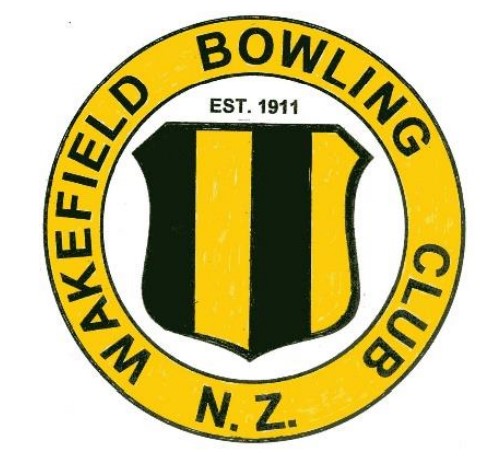Coaching
The club is very fortunate to have three Bowls New Zealand accredited coaches available to provide coaching to all club memebers whether they be experienced or new bowlers. They also provide assistance to non bowlers at the club's community events and to folk who simply want to "Have a Go".
Our coaches have several key coaching foundations, they are:-
Aims:-
To help players improve their performance and enjoyment of playing bowls.
Principles:-
Coaches will maintain accreditation with Bowls New Zealand.
Coaches will follow the "New Zealand Coach Approach" and the Bowls New Zealand "New Zealand Way" while allowing for individual player's circumstances.
Actions:-
Coaching sessions will be held with specific topics, open to all members.
Individual coaching will be arranged with any member on request.
Encourage members to undertake goal setting, purposeful practice and regular review.
Encourage Club members to take coaching courses to gain skills in helping others.
Organised coaching sessions are run, usually on Friday mornings early in the season or, as required by members. These sessions include a wide range of topics including:-
- Preparation routine for and delivery techniques.
- Acieving line and weight.
- Selecting the right shot to play.
- Winning stratergies.
One on one coaching is also conducted as required by members or for members identified by coaches where coaching is likely to lift performance or correct delivery problems.
The dates and times of these training sessions are detailed on club notice board or by arrangement.
Coaching Tips
Coaching tip #1 Pre Shot Routine
To get set both
physically and mentally before the delivery of each bowl.
Compare with a rugby player taking a kick for goal or a tennis
player getting ready to serve.
Before stepping onto the mat.
"Switch on", put aside any distractions. Take your time to
prepare for the shot.
Take advice from the skip if in a team
game. Be clear in the shot you want to play.
Choose your line
and visualise the bowl travelling to where you want it to finish.
Take a breath and relax your neck/shoulder muscles as you breathe
out.
Now you are ready to step onto the mat and deliver!
Coaching tip #2 Delivery
Once you have the shot to be played clear in your mind and visualised the bowl's path (PSR), step onto the mat.
Place
feet in the same position every bowl, feet pointing down the
intended line, shoulders and hips square to the line.
Pendulum
swing along the line, keep elbow and wrist straight, release bowl
at the lowest point of the swing when arm is vertical. Bowl
speed will be determined by the length of the swing and "feel".
Follow through with the arm along the line, "palm to the sky",
stay low, step forward along the line.
"Low, slow, flow".
Straight lines all the way. "Let the bowl do the work".
Coaching tip #3 Consistency
To get a consistent result, there needs to be a consistent
delivery. Do the same every time.
Reduce variability as much
as is within your control.
Repetitive purposeful practice
leads to "muscle memory" and more consistency.
Pre shot
routine, body alignment and delivery technique as in previous
tips.
Try to get in a rhythm, "in the zone" and on
automatic (Rupert as in Peter Bellis' book).
Avoid
distractions, overthinking and especially negative thoughts
(Wally).
There is a copy of Peter Bellis' book in the Club.
Know your and your team's favoured mat placement and jack length.
Find your preferred side of the rink early in a game and stick
with it unless something changes, play up and down the same side
of the rink as much as possible to reduce variations
Coaching tip #4 Adapting From One Shot to the Next
This follows well from the previous article on consistency.
Nobody
can be 100% consistent so need to adjust from one bowl to the
next. Top players will be 60+% consistent and will inevitably
correct for the next bowl. I once coded a game of singles where
the player had over 80% effective bowls - that is exceptional.
In order to adjust for your next bowl, it is necessary to
understand how the previous bowl ended as it did. If the result
was as intended, great - do exactly the same again!
If it
went astray, be aware of why that may have happened, did the
bowl come out correctly? did it go down the line you intended?
did you do something different with your delivery? eg. common
faults: falling off balance, swinging arm across the body,
rotating wrist, standing up too soon.
Understanding this will
reduce the risk of overcorrecting.
Once you have identified
the cause, focus on your delivery for the next bowl. Learn from
the previous one then forget about it.
Consistent delivery
technique will give more consistent results so work on this.
"Switch on'' with your pre shot routine.
"Rupert" will set
your brain on auto (Peter Bellis).
"The most important bowl
in a game is the one in your hand".
Coaching tip #5 Building the Head
Following on from the tips on individual play, we now
consider team play.
Each end should be considered as a game
as itself within the full game. While the aim is to score as
many points as possible it is not necessary to win every end in
order to win the overall game. Gain as many points as you can
and keep the opposition from scoring multiples.
Second shot
is always a good bowl, 2 seconds is even better.
There are
several components to building a head. These apply to any format
of the game though for this purpose I will describe a game of
fours or each individual bowl in a game of singles. These are
generalizations and there may be exceptions particularly taking
note of the scoreboard situation and the conditions.
1. Delivery of the jack can be crucial in winning or losing a game
and can create a momentum shift either for or against you. Know
what is your team's favourite mat placement and jack length,
discuss this before the game starts. If you are going well, keep
it the same; if the opposition is doing well, change something
whenever you get the mat.
A good practice is to deliver the
jack to a set lentgth and draw to it with 2 bowls..
2. Lead and
two (1st and 2nd bowls in singles) should build the foundation on
which a good head will result.
Lead should aim to get 2
bowls as close to the jack as possible. (In a 3 bowl game, two
on the jack and one behind is ideal; in 3 bowl pairs the lead's
3rd bowl may occasionally need to be attacking). As a general
rule play up and down the same side of the rink as this will
enable more consistency but be aware of when to change if it is
not working or if conditions change.
Player two will support the lead, draw to the jack if needed to
get the shot and/or add to the count or play positional bowls as
directed by the skip. Two should always aim to have bowls behind
the jack either to defend if you are up on the head or give the
three and skip the opportunity to attack if down on the head.
Occasionally the skip may ask the two to attack.
Short bowls
rarely come into play later in the head, back bowls can be
useful.
3. Player three (3rd bowl in singles) may have to add
to the count, play positional bowls or attack as directed by the
skip. The three will support the lead and two and reinforce the
team's game plan. The three and skip will confer to be clear on
the shots to be played, three should allow the skip to play
their shot without interference as skip will have just left the
head and have the shot in mind. If the head has changed, three
should describe the situation, "draw a picture" for the skip and
let the skip decide on the shot to play.
If a team plays
together often, they will get to understand each other's game.
4. Skip should decide the mat/jack combination on each end as
previously planned with the team, direct each team member as to
the shot to play bearing all the above factors in mind and
encourage the team with positivity (be aware of the effects of
body language). Skip should decide what shot to play before
leaving the head, depending on the situation of that end and the
overall scoreboard, may need to draw to the jack, defend or
attack the head.
Each player in a team has an equally
important role to play.
Aim to score on each end but if
cannot then avoid going down by more than 1 shot each end.
The more bowls a team has around the head and behind, the more
chances for a good result.
Coaching tip #6 Shot Selection
There are 4 types of shot:
1. Draw - to the jack, to an
off centre jack or as a positional bowl
2. Controlled forcing
shot - 1 metre through the head to trail the jack or rest on
bowls.
3 . Firm forcing shot - 2 metres on or "ditch weight"
to move bowls or the jack.
4. Drive.
Draw is the basic
shot for all bowls and the most frequently required.
Forcing
shots are similar to draw but visualising for the bowl to finish
at a point behind the head as with a positional bowl but through
the head (skip can help by marking the point e.g. "draw to my
foot"). It takes practice to adjust the balance of speed and line
required.
Drive is a low percentage shot except for those who
have practiced a lot and can be risky. It requires stability of
body position on delivery and follow through down the intended
line (as do all shots but especially so for the drive).
The lead and two will draw to the jack or behind as discussed
previously to "build the head".
Lead should generally play
up and down the same side of the rink to reduce variation and
increase consistency; work out early in the game which side of
the rink you prefer.
Second should wait for the skip's
directions and play accordingly.
If you hold the shot, draw to
add to the count, aim to have 2 shots close to the jack then you
may be asked to play for position, behind the jack on either
side as directed by the skip.
If up on the head, "take
green" so that your bowl stays on that side of the centre line
(crossing the centre line could give away the advantage by
hitting the jack or your shot bowl).
If down on the head,
draw for second shot and preferably 2 seconds.
Short bowls
rarely come into play later in the end, back bowls can be
useful.
Three and skip will make decisions depending on
how the head develops and taking account of the scoreboard:
If the team is holding shot, they may choose to add to the
count, play a positional bowl to defend (take green as above) or
occasionally may wish to move the head around to reduce the
opposition's options.
If down on the head, they may choose to
draw to cut down the opposition count or play an attacking shot.
If down, your bowl must "reach the head" in order to make a
difference.
Choosing which shot to play is all about
benefit vs risk; look for the shot with the most options for a
positive result and consider what could go wrong, e.g. what
would happen if you play an attacking shot and take out your own
bowls or if you move the jack but have no back bowls.
If you
are up on the scoreboard, you can be more defensive or if down
on the board some risk may be justified.
Coaching tip #7 Purposeful Practice
When you come to practice, always have a specific aim of what to
achieve from the session rather than just roll up and down the
rink. It may be a focus on a particular aspect of your delivery,
line taking, speed control or a specific type of shot. Be aware
of what events you will be playing in and the role you will be
playing and target the practice to that.
Measure how you
perform for future comparison and improvement.
If you want advice on
specific drills or scoring systems, please contact one of the
coaches.
Acknowledgement
Thanks to our previous Coaching Convenor Tony Eames for providing the above tips.
















